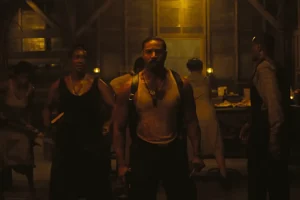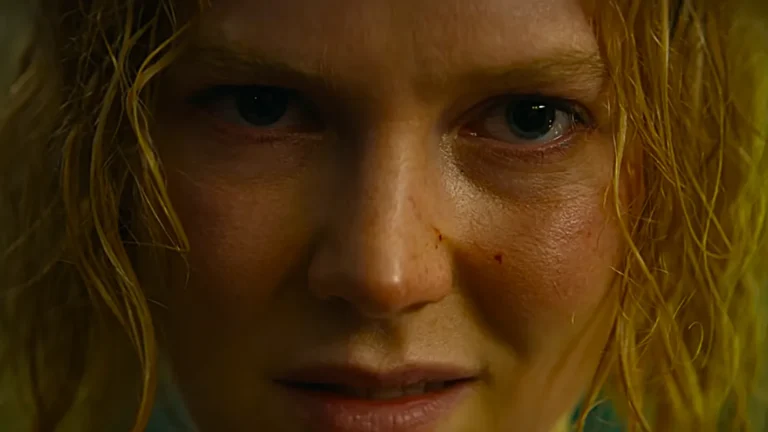A Complete Unknown, the 2024 biopic, revisits the enigmatic journey of legendary musician Bob Dylan during the transformative 1960s. Focusing on his shift from folk to electric rock, the film unravels the controversy and relationships that defined Dylan’s career. While it captures key moments from his life, A Complete Unknown takes creative liberties, altering significant details for dramatic effect. Here is how:
A Complete Unknown: Real Live Vs The Movie
| Aspect | Real Life | Film Portrayal |
|---|---|---|
| Arrival in New York | Dylan arrived in 1961, initially visiting Guthrie’s family home before heading to Greystone Hospital. | The film depicts him hitchhiking directly from New Jersey to New York in a single day. |
| Meeting Woody Guthrie | Dylan visited Guthrie in the hospital but had a less dramatic relationship. | The film dramatizes their encounter, emphasizing a deep connection. |
| Pete Seeger’s Trial | Seeger faced trial for alleged Communist sympathies, attempting to perform folk songs in court. | The film accurately portrays this event but may simplify its complexities. |
| Romantic Relationships | Dylan’s relationship with Suze Rotolo was significant but complex; she left for six months and had an abortion. | The film simplifies their relationship dynamics and omits key details about their breakup. |
| Johnny Cash Interaction | Johnny Cash did not attend the 1965 Newport Folk Festival; he supported Dylan through letters instead. | The film includes a fictional supportive conversation between Dylan and Cash at Newport. |
| The “Judas” Incident | The infamous “Judas!” shout occurred during a concert in England, not at Newport. | The film inaccurately places this moment at the Newport Folk Festival. |
| Cuban Missile Crisis Scene | Dylan wrote “Masters of War” in response to broader political tensions, not directly during the crisis. | The film portrays him performing the song during the crisis, suggesting an immediate connection. |
| Motorcycle Accident | Dylan was involved in a motorcycle accident in 1966, which he downplayed publicly. | The film shows him riding off on a motorcycle but does not depict the accident itself. |
| Police Whistle Story | The police whistle used in “Highway 61 Revisited” belonged to musician Al Kooper, not Dylan. | The film suggests Dylan impulsively acquired it from a vendor, which is fictionalized. |
| Overall Narrative Focus | Dylan’s life is marked by complexity, including struggles with identity and fame. | The film emphasizes emotional storytelling while taking creative liberties with factual accuracy. |
Bob Dylan’s Electric Transition in A Complete Unknown

One of the movie’s central narratives revolves around Bob Dylan’s controversial move to electric instruments during the 1965 Newport Folk Festival. In reality, Pete Seeger didn’t object to Dylan “going electric” as depicted. Instead, he was frustrated by the distorted sound quality that muddled the lyrics of “Maggie’s Farm.” In a postcard to Dylan, Seeger later clarified, “I was furious at the distorted sound… My big mistake was not addressing the booing crowd directly.”
Similarly, the film dramatizes the infamous “Judas” moment by relocating it to the Newport Festival instead of Manchester in 1966. While this change heightens the narrative tension, it veers from historical accuracy. Dylan’s now-iconic response—“Play it loud”—remains one of rock history’s most celebrated moments, even if slightly altered for cinematic effect.
READ MORE: G.I. Robot’s Story in Creature Commandos: Origin, Role & Future
The Myths of Bob Dylan’s Relationships

The relationships in A Complete Unknown form a significant part of its storyline. Yet, the film modifies timelines and contexts for dramatic cohesion.
Johnny Cash Friendship: The film portrays Johnny Cash as meeting Dylan for the first time at the 1964 Newport Folk Festival, but this is a common myth. According to accounts from Dylan and Cash’s son, the two met in a New York hotel room between 1962-1963, well before the festival. Their bond, highlighted in the film, reflects reality, but the timeline is skewed.
Joan Baez: Depicted as an emerging artist when she meets Dylan, A Complete Unknown alters Baez’s professional status. By 1961, when they first crossed paths, Baez was already a best-selling folk musician. Her self-titled 1960 album had gone gold, with her name firmly established in the folk music scene. The idea of them bonding as struggling artists is a fictional embellishment.
Suze Rotolo: In the film, Rotolo is aged up, with Elle Fanning playing Sylvie Russo, her fictional counterpart. Historically, Rotolo was 17 when she began dating Dylan, who was 20. By omitting this detail, the film avoids potential discomfort for modern audiences while still exploring the impact of their relationship on Dylan’s music.
READ MORE: Sega Announces New Virtua Fighter Game at The Game Awards 2024
Key Musical Contributions Omitted

The influence of Peter, Paul, and Mary on Dylan’s career is noticeably understated. The folk trio’s rendition of “Blowin’ in the Wind” brought Dylan’s music to mainstream audiences, peaking at #2 on the Billboard charts. Their performance at the March on Washington also solidified the song as an anthem for social change. In contrast, Dylan’s original version didn’t chart, underscoring how pivotal these artists were in amplifying his reach.
Likewise, the creative origin of the police whistle in “Highway 61 Revisited” is misattributed to Dylan in the film. In reality, it was Al Kooper’s suggestion, adding a quirky yet significant touch to the song.
Romantic Drama and Personal Choices
The film touches on Dylan’s romantic entanglements, including his sudden marriage to Sara Lownds shortly after his split from Joan Baez. Historical accounts reveal that Dylan began an affair with Lownds while still with Baez, a fact omitted in the film to avoid casting the musician in a negative light. Dylan’s tour manager even quoted him as saying he chose Lownds over Baez for her perceived submissiveness—a controversial detail left out in A Complete Unknown.
READ MORE: Squid Game Season 2: Netflix Premiere Date and Time (All Time Zones)
Artistic License: Why History Was Altered

James Mangold, the director of A Complete Unknown, admitted to balancing historical accuracy with narrative impact. By including dramatized events, such as Johnny Cash’s fictional presence at the Newport Folk Festival, Mangold sought to convey emotional truths rather than rigid facts. The support Cash extended to Dylan, while not in person at the festival, was indeed real, as evidenced by a public letter defending Dylan’s shift to electric music.
Mangold’s reinterpretation of Dylan’s life is further evident in his decision to merge multiple events, such as the “Judas” incident, to enhance the storyline’s flow. While some purists may critique these changes, they serve to capture the cultural tension and emotional stakes of Dylan’s transformation.
A Complete Unknown is in theatres.
Source: ScreenRant
Stay updated with the Latest News and Stories, follow us on our social media platforms.
You can follow us on:
Stay Connected!! Join our Whatsapp Channel
















